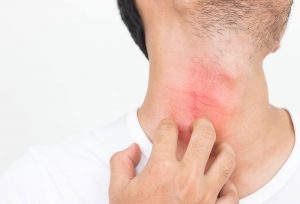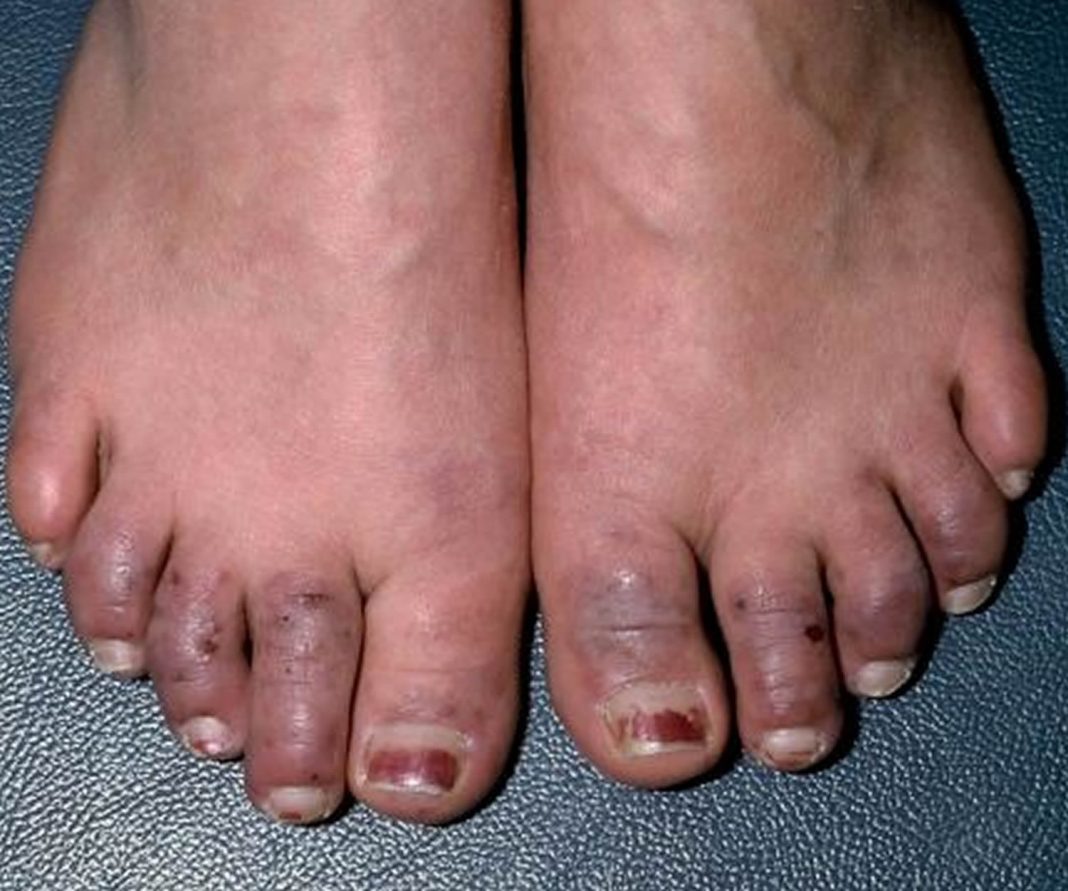It is a known fact that men shave regularly to give a clean and smooth look to their skin. However, men who shave regularly know that they can get frustrated due to an associated skin problem, that comes with shaving, known as razor bumps.
Razor bumps are the small part of the hair that remains in the hair follicle below the skin surface even with shaving. It then begins to grow into the skin to become ingrown hair. Ingrown hairs often appear as angry red bumps which can spoil the smart look of a freshly shaven face. Razor bumps are also called razor burns, and they are usually caused by improper shaving tools and razors. When the hair is cut beneath the skin, then it tends to curl as it grows back which is forming unsightly and often painful bumps. It is known that the ounce of prevention is worth a pound of cure, so the best way to help razor bumps and improve your shaving overall is through using a single–blade razor in combination with high-quality pre-shaving oil and after-shaving lotion. Also, there are many home remedies which can help you to get rid of the ingrown hairs, and some are more effective than others. Talk with your doctor about the best home remedy which can help you to reduce your razor bumps.
14 Home remedies for razor bumps
White tea and tea bags
It is a known fact that ordinary white tea bags can help in getting rid of razor bumps. Tea has tannic acid which can help in reducing inflammation [1]. You should wet the tea bags, and press them against the affected skin to reduce the swelling and redness.
Tea tree oil
This type of oil comes from tea tree leaves. It is a natural anti-bacterial agent. Tea tree oil has astringent and antibiotic properties [2,3], which come in very handy for treating and cleansing the areas of the body which are affected by razor bumps. Bacteria can slow down the healing process of the skin, but the astringent properties of tea tree oil will tighten your pores, and protect them from future issues. Pure tea tree oil is very strong, so you should dilute it with a bit of water before you apply it to your skin. Take this mixture with a cotton ball, and then apply it to your razor bumps. It can speed up the healing process as well as quickly alleviate the swelling. Also, you can add some of the tea tree oil to your bath for a soothing and relaxing soak.
Cucumber
This natural cure is used in many different ways to help in healing the skin. You can take a slice of cucumber, and then rub it gently over the razor bump for a few minutes. This will soothe and hydrate the area [4]. You should chill the cucumber in the freezer for a few minutes because this will add to its soothing effect. Also, you can make a makeshift cream by mixing milk and cucumbers. You should dice or smash the cucumber and mix it with milk. You should then apply this mix to the razor bump, and let it stay there for five to ten minutes, then rinse it using cool water, and pat it dry.
Witch hazel
This is also very effective home remedy for razor bumps. This extract comes from the leaves and bark of the witch hazel plant, and it has astringent as well as antibacterial properties. The extract of this plant has been used for its medicinal properties all the way back to before the Europeans arrived in America. This home remedy can be very powerful, so if you have sensitive skin, then it might be necessary to dilute it before you apply it. You can apply it using a cotton swab or a cotton ball.
Lemon juice
Lemon is acidic in nature, which can help to stop the bacteria from colonizing the ingrown hair follicles [5]. You should apply lemon juice to your razor bumps to help in preventing infection and reduce the redness.
Coconut oil
This is one of the best home remedies for razor bumps because not only is it good for the skin’s overall health, but also for keeping it smooth and soft. Also, it will give a moisturizing effect as well as provide protection and nutrition to the skin [6]. Also, it smells pretty great. You can add sugar to the coconut oil to create a coconut and sugar scrub with added exfoliating elements.
Strawberries
You can use a paste of strawberries for razor bumps because it can help you to smell sweet as well as rid of the inflammation. You should make this paste by mashing up just enough strawberries with sour cream to form a relatively thick paste. You should slather it onto the irritated areas, and let it stay there for around twenty minutes before you rinse it using cool water.
Baking soda
Baking soda is also a very effective home remedy for getting relief from these bumps. The baking soda will fight against the itching associated as well as provide an anti-inflammatory effect, which can help with other skin problems caused by everything like allergies or bug bites. You should take a bowl of water, and then keep adding baking soda until you have a paste-like consistency that you can work with. You should spread this paste over the affected area, and the baking soda in it will give you relief from the pain and itching that accompany the rash. It is recommended to mix 3 parts water with 1 part baking powder for the best consistency, and you can apply the paste using a cotton swab or even your finger. You should let it stay there for ten minutes before you rinse it off, and pat the skin dry.
Compresses
When we mention compresses, you should know that it means directly applying pressure to an area using an absorbent or soft material. This can help you to get relief from symptoms like inflammation.
Hot compresses can open the pores which can reduce your risk for razor bumps. You should dip a towel or something similar into the water which is warm enough to have an effect but cool enough so as not to cause you unnecessary discomfort. You should press the cloth to the area for a period of a few minutes at a time, and re-warm the towel as needed.
On the other hand, cold compresses will give you relief from irritation, itchiness, and redness in the areas where razor bumps are likely to appear or already there. You can use freezer packs for a compress or wrap a bunch of ice in a towel, or even use frozen vegetables.
Honey
For many people, when someone says to use honey for razor bumps, they think it is strange. However, honey has antiseptic properties, and it can also hydrate your skin [7]. You should apply honey to the razor bump, and let it stay there for about 5 minutes. Then, you should wash your face with water and pat it dry.
Apple cider vinegar
This is one of the best home remedies for many different diseases, and razor bumps are also included. It is known that apple cider vinegar is very versatile, which means that it can reduce the risk of infection, relieve itching, as well as decrease inflammation [8]. You should use a cotton ball to apply it to the razor bumps. You should leave the area to dry out, and then rinse it with water and pat dry. This home remedy will not only relieve you from the symptoms associated with razor bumps, but it will speed up the healing process. If your razor bumps are in a sensitive area or if you have sensitive skin, then you should dilute the apple cider vinegar with water before you apply it.
Aloe Vera
Aloe vera is known to have antibacterial as well as healing properties [9], so this is why it can be used for everything from sunburns to eczema and psoriasis. This home remedy can kill bacteria, soothe, and moisturize your skin. Aloe Vera gel is very effective on the skin, so you can even use it as a shaving cream, as well as to help you with the razor bumps.
Exfoliate with a natural papaya scrub
If your razor bumps have caused pustules or inflamed skin, then you should avoid using any harsh or chemical-based exfoliants on your skin. You should only exfoliate your skin with a natural scrub, and this scrub containing raw papaya can help in sloughing off dead skin cells as well as easing the problem of ingrown hairs. You should mix yogurt with papaya and oatmeal for a scrub that is gentle for your skin.
Garlic
Garlic has antibacterial and antimicrobial properties which makes it a good home remedy for a wide range of skin problems [10]. Garlic has organosulfur compounds that can inhibit bacterial growth anywhere in the body, including razor bumps. You should consume a few cloves of raw garlic every day, or you can just add some grated garlic into your food.
References:
[1] Thring TS, Hili P, Naughton DP. Antioxidant and potential anti-inflammatory activity of extracts and formulations of white tea, rose, and witch hazel on primary human dermal fibroblast cells. Journal of Inflammation (London, England). 2011;8(1):27.
[2] Mota ML, Thomas G, Barbosa Filho JM. Anti-inflammatory actions of tannins isolated from the bark of Anacardium occidentale L. Journal of Ethnopharmacology. 1985;13(3):289-300.
[3] Carson CF, Hammer KA, Riley TV. Melaleuca alternifolia (Tea Tree) oil: a review of antimicrobial and other medicinal properties. Clinical Microbiology Reviews. 2006;19(1):50-62.
[4] Mukherjee PK, Nema NK, Maity N, Sarkar BK. Phytochemical and therapeutic potential of cucumber. Fitoterapia. 2013;84:227-36.
[5] Ghaemi EO, Khorshidi D, Moradi A, et al. The efficacy of ethanolic extract of Lemon verbena on the skin infection due to Staphylococcus aureus in an animal model. Pakistan Journal of Biological Sciences 2007;10(22):4132-5.
[6] Nevin KG, Rajamohan T. Effect of topical application of virgin coconut oil on skin components and antioxidant status during dermal wound healing in young rats. Skin Pharmacology and Physiology. 2010;23(6):290-7.
[7] Burlando B, Cornara L. Honey in dermatology and skin care: a review. Journal of Cosmetic Dermatology. 2013;12(4):306-13.
[8] Yagnik D, Serafin V, J Shah A. Antimicrobial activity of apple cider vinegar against Escherichia coli, Staphylococcus aureus and Candida albicans; downregulating cytokine and microbial protein expression. Scientific Reports. 2018;8(1):1732.
[9] Hashemi SA, Madani SA, Abediankenari S. The Review on Properties of Aloe Vera in Healing of Cutaneous Wounds. BioMed Research International. 2015;2015:714216.
[10] Ankri S, Mirelman D. Antimicrobial properties of allicin from garlic. Microbes and Infection. 1999;1(2):125-9.





